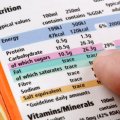
The number of people prescribed opioids in Queensland increased more than 11-fold in two decades, but most prescriptions were in a low-dose range, according to University of Queensland-led research.
Dr Adeleke Adewumi, a UQ PhD graduate and Senior Pharmacist at Maryborough Hospital, said dosages of opioids within the state were most frequently on the lower end of the scale.
“The number of people dispensed dosages associated with increased risk of accidental overdose has declined since 2004,” Dr Adewumi said.
“At the same time, the number of patients dispensed opioids increased from 28,299 to 322,307 from 1997 to 2018, and the number of medical practitioners prescribing them rose from 4,537 to 20,226.
“Our findings indicate that most Queensland medical practitioners prescribe lower opioid doses, and that the proportion prescribing lower doses has increased since 2004 specifically.”
The researchers analysed Monitoring of Drugs of Dependence System (MODDS) data for adult Queensland residents (18 years or older).
It featured contributions from experts in UQ’s Faculties of Medicine, Health and Behavioural Sciences, Humanities and Social Sciences, and Curtin University in Perth.
The study aimed to determine the most frequently prescribed doses of opioids and examine associations between the average number of prescribers per patient and the opioid doses dispensed.
“The proportion of practitioners who prescribed opioids at doses of 100 morphine milligram equivalents (MME) or more per day peaked in 2003,” Dr Adewumi said.
“Many pain specialists now recommend less than 100mg per day for no more than 90 days to reduce the likelihood of addiction, dependence and overdose.
“Similarly, the number of doctors prescribing 50 to less than 100 MME per day also peaked in 2003.
“Doses greater than 50 MME per day are associated with an increased risk of accidental overdose, however this risk remains small and has declined over time.
“By 2018, there was an observed decline in prescriptions over 100 MME per day due to stricter health policies for doctors, which significantly reduced the number of practitioners prescribing even 50–100 MEE doses.
“During 1997 to 2018, more than 1.9 million people were dispensed doses of less than 20 MME per day.”
This research is published in the Medical Journal of Australia (DOI: 10.5694/mja2.51115).
Media: Dr Adeleke Adewumi, a.adewumi@uqconnect.edu.au; UQ Communications, med.media@uq.edu.au, +61 7 3365 5118, +61 448 410 364.
.jpg)









